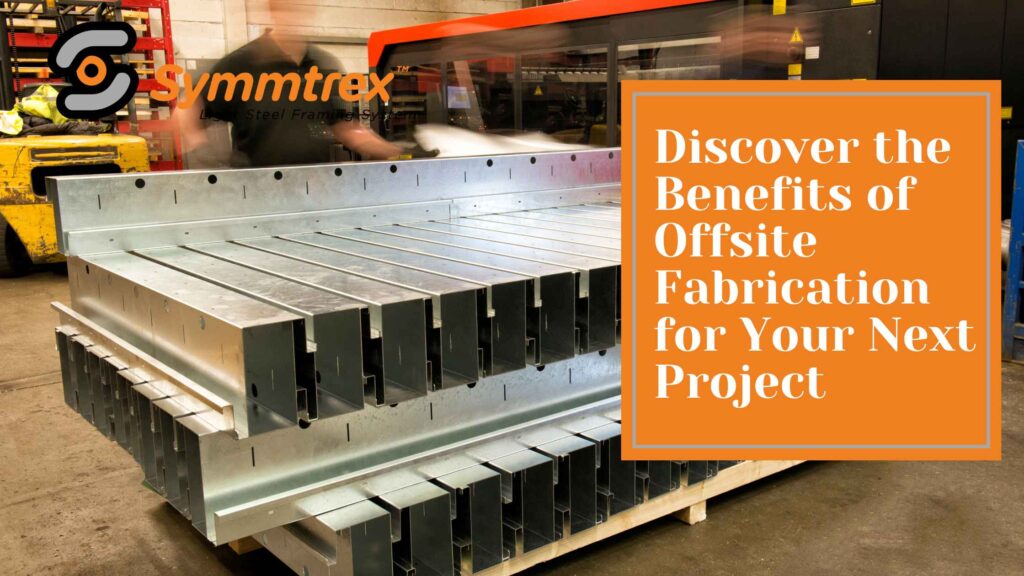In today’s fast-paced construction industry, efficiency, sustainability, and innovation are more than just buzzwords—they are essential components for success. Offsite fabrication, a method where building components are prefabricated in a factory setting before being transported to the construction site for assembly, is gaining momentum for its ability to meet these contemporary demands. This blog post explores the numerous benefits of offsite fabrication and why it should be considered for your next project.
Revolutionizing Construction through Offsite Fabrication
What is Offsite Fabrication?
Offsite fabrication represents a paradigm shift from traditional on-site building methods. By assembling materials and structures in a controlled environment away from the final location, this approach transforms how projects are conceived, constructed, and completed. It spans a range of modules, from entire rooms that only need to be connected on-site to specific pre-made elements like walls or floors.
The Driving Force Behind Offsite Fabrication
The growing interest in offsite fabrication stems from its promise to address several longstanding challenges in the construction sector. These include reducing waste, minimizing delays due to weather or labor shortages, and improving overall build quality. In an era where timely delivery and environmental responsibility are paramount, offsite fabrication offers a compelling solution.
Unpacking the Benefits of Offsite Fabrication
Enhanced Efficiency and Speed
The efficiency gains from offsite fabrication are substantial. Since components are manufactured simultaneously as site preparation occurs, overall project timelines can be significantly reduced—often by weeks or even months. This speed doesn’t come at the expense of quality; in fact, the controlled factory environment ensures consistent standards and reduces the likelihood of errors, which are more common in traditional construction settings.
Streamlined Processes
With offsite fabrication, the construction process becomes more streamlined. The predictability of working in a factory setting allows for better scheduling, fewer delays, and optimized labor use. This not only enhances productivity but also contributes to a smoother project flow from start to finish.
Cost Savings
One of the most appealing benefits of offsite fabrication is its potential for cost savings. The precision of factory manufacturing results in less waste of materials, while the faster construction timeline can lower overall labor costs. Additionally, the predictability and reduced risk of delays further contribute to a more controlled and often reduced project budget.
Predictable Outcomes
The ability to closely monitor and manage the production of components leads to more predictable project outcomes. There are fewer financial surprises with offsite fabrication, as most of the construction costs are known upfront. This allows for better financial planning and risk management throughout the project lifecycle.
Improved Safety Standards
The factory environment inherently offers safer conditions compared to traditional construction sites. Offsite fabrication reduces the time workers spend at heights, in bad weather, or in other hazardous conditions onsite. Furthermore, the reduction in onsite activity decreases the likelihood of accidents, promoting a safer overall project environment.
Worker Well-being
Beyond physical safety, offsite fabrication supports worker well-being by providing stable, controlled, and ergonomically designed work settings. These factors contribute to higher job satisfaction and productivity, further enhancing the project’s efficiency and quality.
Sustainable and Eco-friendly Practices
Offsite fabrication aligns with the growing demand for sustainable construction practices. By optimizing material usage and reducing waste, this method minimizes the environmental impact associated with traditional building techniques. Furthermore, the ability to recycle materials in the factory and reduce onsite disturbances supports broader ecological preservation efforts.
Reduced Carbon Footprint
The efficiency and precision of offsite fabrication also play a critical role in reducing the carbon footprint of construction projects. With fewer deliveries and less waste, the overall energy consumption and emissions associated with building are significantly decreased, contributing to a greener project outcome.
Overcoming Challenges and Maximizing Potential
While the benefits of offsite fabrication are clear, successful implementation requires careful planning and coordination. Choosing the right partners, understanding the logistical needs of transporting prefabricated elements, and ensuring seamless integration on-site are crucial steps in leveraging offsite fabrication to its full potential.
Navigating Logistical Considerations
Transporting large prefabricated components to the construction site presents unique challenges. However, with advanced logistics planning and the development of modular design techniques tailored for transport, these hurdles can be effectively managed, ensuring that the advantages of offsite fabrication are fully realized.
Cultivating Collaboration and Communication
Effective collaboration and communication among all project stakeholders are vital in maximizing the benefits of offsite fabrication. By fostering a culture of openness and integrating tools like BIM (Building Information Modeling), teams can ensure that the prefabrication process aligns with overall project goals, further enhancing efficiency and quality.
The Future of Construction with Offsite Fabrication
As the construction industry continues to evolve, offsite fabrication stands out as a key driver of change, promising a future where projects are not only completed more quickly and cost-effectively but also with a smaller environmental footprint. By embracing this innovative approach, builders and developers can unlock new levels of performance, sustainability, and value for their next project.
In conclusion, offsite fabrication represents a significant advancement in construction methodology, offering a multitude of benefits ranging from increased efficiency and cost savings to improved safety and sustainability. For those looking to stay ahead in the rapidly changing construction landscape, exploring the possibilities of offsite fabrication is not just an option—it’s a necessity for building smarter, more sustainable, and efficient projects in the future.


